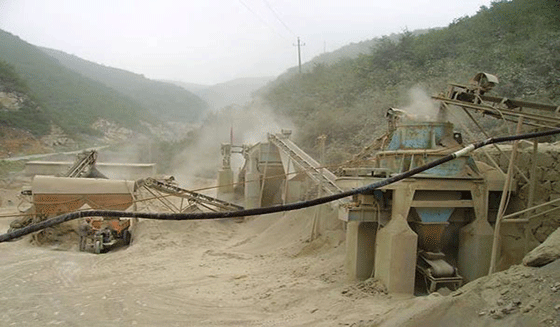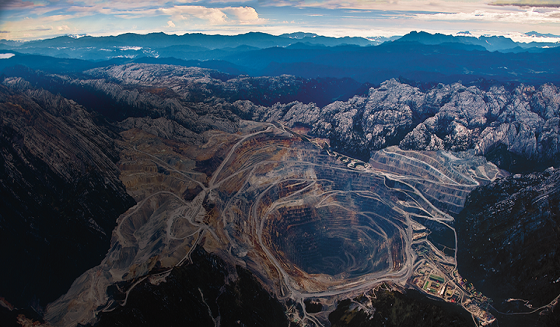The 2015 Metals Outlook Series: Silver, Zinc, Lead

Zanjan Province
July 30, 2015
Production of lead and zinc increased in Peru
August 15, 2015
The market for base metals silver, lead, and zinc is finally seeing moderate action.
The period leading to the global financial crisis saw an explosion of growth, with the sector seeing a 30.9 per cent growth in revenue followed swiftly by a 56.2 per cent growth in revenues, creating a heady market.
However once the GFC hit the bottom swiftly fell out of the market, as prices retreated quickly, and inversely, to the rest of the mining sector.
A 13.2 per cent decline was chased by another period of plummeting revenue, with the sector recording a 43.5 per cent drop in revenue.
It recovered briefly in 2010 before seeing another swift fall into negative territory in 2012 before the current lift into even pricing territory.
This, more than many realise, had a major effect on the Australian mining landscape as the nation is the largest lead exporter and one of the largest zinc concentrate exporters worldwide.
So what lies ahead for the metals?
Much of it relies on the contin-ued weakness of the Australian dollar.
IBISWorld research states that overall revenues and the price of the metals are “forecast to increase over the five years through 2018/19 due to the interplay of higher output, stronger US dollar prices for silver, lead, and zinc, and a weaker Australia dollar”.
According to Grant Thorntons Brock Mackenzie, “silver is cur-rently sitting at a four year low, not too dissimilar to gold.”
“As it is used predominately in industrial applications more than some other metals it is closely tied to the economic conditions in Japan and Europe, so movement there is more likely to impact its trajectory.”
BNP Paribas David McCombe added that he expects base metals to rise slightly over the 2015 period, however when it comes to silver “it will be coming off slightly due to supply and demand issues, but it will see a marginal increase in the backend of 2016, and expect another increase in the 2018/19 period”.
IBISWorld expects silver to be volatile in the coming years “given its status as an investment metal and an industrial input; nonetheless, demand for silver is also expected to expand”.
However it added that silver prices are expected to decrease in the short term.
Zinc does have a slightly brighter future ahead.
ANZ head of economics com-mercial and corporate, Justin Fabo, explained: “Zinc looks to require further short term cau-tion following recent strength.”
“The Shanghai Futures Exchange/London Metals Exchange arbitrage has closed for Chinese importers, as reflected in refined zinc imports.
“Investor positioning is also building strongly on the long side as it becomes a consensus trade; the medium term, however, still looks positive as weak supply growth pushes the market further into deficit,” he said.
This will be strengthened by a forecast growth in Chinese zinc demand, as well as Indian steel demand, as the nations focus on construction and building projects, which will support a solid rise in the metal over the next five years.
IBISWorld forecasts a rise in the zinc price in the short term.
The story of lead is very much one of increasing demand for batteries and power, with the price expected to increase in the near term.
Overall, Fabo believes “base metals have improved amid slightly more positive economic data in China and noticeably better news on the United States economy”.
However he added: “While the macro environment is showing signs of gradual improvement, it will continue to be supply side issues that drive base metal markets; on that front, we continue to favour nickel and zinc in the near term.”
IBISWorld research stated that the small gains ahead in the 2016/17 “will be offset by forecast falls in 2017/18 due to pricing declines”.
The current slide seen in over-all refining is also expected to slow, but not stop.
“Demand from downstream silver, lead, and zinc smelting and refining [is] expected to be flat as the manufacturing industry continues to shrink,” IBISWorld states.
According to IBISWorld the volatility experienced by the silver, lead, and zinc sector will subside, with the days of massive revenue spikes followed by huge declines over.
The cycle of revenue spikes seen in 2007, followed by the dramatic fall in the space of two years, is no longer the norm for the base metals, with a period of calm expected ahead with moderate growth predicted.
The 2014/15 period is forecast to generate a healthy 2.8 per cent growth in revenues levels, followed by a 3 per cent growth in the following period, and another period of growth – 4.2 per cent – in 2016/17.
However these gains are expected to retreat in the 2017/18 period by 4.1 per cent, before recording another phase of growth of just below 4 per cent in the 2018/19 period.
Source: Australian Mining


